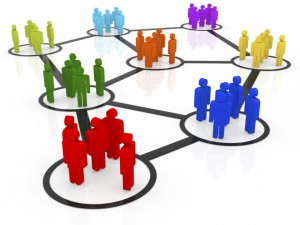Cougle
Trillions Will Depend on Whether Driverless Cars Require Human Drivers
In the U.S more than $2.5 trillion flows through car-related industries every year. This article states that where this money will flow in the future depends on whether cars will require human drivers. The big auto companies are all pursuing strategies that augment rather than eliminate human drivers, while Google is going directly to fully autonomous cars because they believe asking a human driver who is reading or daydreaming to take over the car in an emergency will not work.
The article talks about the possibility of fleet-operated driverless taxis and how this will hurt car dealers because the fleet operators will likely go straight to the manufacturer and bypass the dealers. This would also impact the auto loans and financing industries because less people will be buying cars as well as the car rental market. The $255 billion trucking industry would be impacted because it would make companies rethink how they transport goods and it could eliminate many truck-driving jobs.
Do you think fully autonomous cars will help or hurt the economy? Do you think autonomous cars with human drivers would have less of an impact on the economy?
Target Website and Apps Overwhelmed by Demand for Lilly Pulitzer

Target partnered with Lilly Pulitzer, a luxury clothing line, and created a collection that would sell at a fraction of the cost of regular Lilly Pulitzer items. The demand for the product line was incredible and took the entire Target website offline for about 20 minutes. Target also delayed the online launch of the collection by two hours, and ask traffic got heavier, Target made the website inaccessible.
A Target spokesman said, “We realize there is an extreme amount of excitement around this collaboration, and we apologize for any disappointment this may have caused our guests.” However, it seems like Target was happy with the buzz this collection created even if it annoyed customers.
Target recently took back control of its web operations from Amazon, and this incident highlights the shortcomings of Target’s online infrastructure. Can Target compete with companies like Amazon if its website cannot handle high surges in demand like the Lily Pulitzer sale? Should Target be more concerned about its IT infrastructure than it is?
How To Drive Enterprise Collaboration
Earlier this week someone posted an article about why CIOs can’t sell enterprise collaboration tools and today I saw an article where IT leaders gave tips on how to drive enterprise collaboration and ensure its success. The IT leaders said the most common reason for CIOs having difficulty with enterprise collaboration is that they pursue solutions to problems that don’t exist.
Some of the tips given in the article included getting insight from employees and making sure they are invested in the selection process. They also said to CIOs should look for collaboration tools that require little training it will generally be adopted faster by more employees. Some IT leaders said gamification was the key to adoption because it provides incentives for employees to use the new collaboration tools. Other IT leaders said they use “the art of seduction” by creating collaborative tools that the user clearly sees as superior to previous tools or practices. Therefore, there is no need to drive adoption because users are already willing to adopt to a better solution.
Which tip do you think is most important in driving enterprise collaboration? In your internship or work experience, how have IT leaders tried to drive enterprise collaboration? Did it work?
Why Digital Transformation Is a Make-or-Break Proposition

This article talks about how there is a growing global community of digital citizens that are demanding more from businesses, and that meeting these demands can be make-or-break for the business. Jeremy Burton, president, Products and Marketing, at EMC, gives five make-or-break attributes that companies must gain through digital transformation:
- The capability to predictively spot new opportunities in markets
- The capability to demonstrate transparency and trust
- The capability to innovate in agile ways
- The capability to deliver unique and personalized experiences
- The capability to operate in real time
For each of the attributes mentioned above, less than 15% of business leaders believe their company is doing well in that area. By 2020, 30 billion devices will have created 44 trillion gigabytes. There is serious value to be gained from this data that will help companies gain the five attributes, but “49% of business leaders admitted they do not know how to turn all of their data into actionable information.” Do you think companies are truly performing that poorly in these areas or are the business leaders not confident in their company’s performance? In what ways could a company improve in any one of the five areas? How can they begin to turn their data into actionable information?
Will Apple Disrupt the Luxury Watch Market?
This article talks about how Apple’s new Apple Watch could disrupt various industries, including the fitness wearable and luxury watch industries. Apple’s low-end Apple Watch Sport will likely disrupt the fitness wearable industry, while the higher end Apple Watch and Apple Watch Edition will be more likely be disruptors for the luxury watch industry. Tim Cook is not just looking to create another smartwatch; he sees this as a move for Apple to enter the luxury fashion industry.
It appears that the luxury watch industry does not feel threatened by Apple’s newest device. Sebastian Vivas, director of a watch museum maintained by Swiss watch manufacturer, Audemars Piguet, says “We’re not afraid; we’re just a little bit smiling.”
Is the luxury watch industry underestimating the threat of the Apple Watch? Do you think there are other industries that should also prepare to be disrupted by the Apple Watch?
Using Disruptive Innovation for Social Change
This article talks about how Mark W. Johnson (Clayton Christensen’s business partner) says that disruptive innovation is not about being better than what currently exists. He says disruptive innovation “transforms a complicated, expensive product into one that is easier to use or is more affordable than the one most readily available.You know an innovation is disruptive when a new population has access to products and services that previously were only affordable for the few or the wealthy.”
A subset of disruptive innovations called catalytic innovations is introduced and described as “providing good-enough solutions to inadequately addressed social problems.” An example would be the MinuteClinic which provides affordable walk-in health services for common health problems. The idea of the MinuteClinic lead to the creation of other walk-in clinics that serve people who cannot afford health care.
As business students we usually focus on the profits to be earned from a new idea or technology, but I think it’s interesting to look at the social changes we can achieve. What other examples can you think of where disruptive innovation was used for social causes? How do you think disruptive innovation can be used for social change in the future?
6 Ways to Measure the Value of Your Information Assets
Last week we talked about how everything is measurable and it is necessary for organizations to measure the value of IT so that the entire organization sees the importance of IT. This author of this article speaks with Doug Laney, research vice president for Gartner Inc., who says there is a gap between the realized and potential value of information. Laney gives his six models for how businesses can treat data as an asset in order to help close that gap.
Non-financial Methods
1. Intrinsic value of information – breaks data into characteristics such as accuracy, accessibility, completeness, then rates each characteristic and tallies for final score.
2. Business value of information – measures data characteristics in relation to business processes.
3. Performance value of information – measures data impact on key performance indicators over time.
Financial Methods
4. Cost value of information – measures the cost of “acquiring or replacing lost information” as well as lost revenue caused by loss of data
5. Economic value of information – measures how data contributes to revenue
6. Market value of information – measures the revenue generated by “selling, renting or bartering” corporate data.
Do you agree with the methods Laney suggests? Are their other ways you would measure the value of data? Which methods do you think would be most effective at convincing your CEO that data is an asset to your company?






